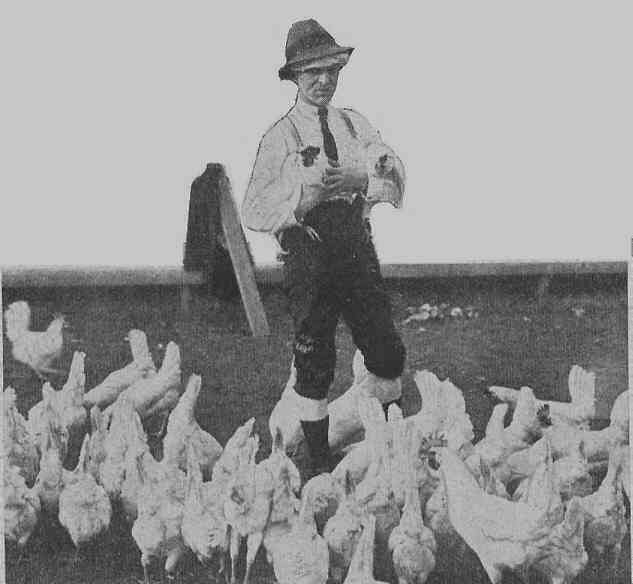|
Farming in Hartley - a Brief History
The earliest evidence of
agriculture in Hartley dates back to Roman times. A farmhouse of
1st/2nd century AD date was discovered when the Wellfield Estate
was being built. Bones of pigs, sheep and cattle were found in a
ditch.
From the Domesday Book we
learn that the village had a cultivated area of 600 acres and
"wood for10 pigs". It is clear from place name evidence
that the land in this area had to be won by the new settlers. The
"ley" element in Hartley, Idleigh and Ridley suggests
clearance of land, as did the names of some of Hartley's fields.
We can gain a glimpse of
the crops grown in Hartley in 1296, because the taxes in that
year were paid in corn, to be taken to the king's army in Gascony.
The collectors received 18 bushels of wheat and 4 bushels of oats
from Hartley. A reflection of the predominance of wheat locally (historically
people have always preferred wheat bread to that of any other
grain).
The first detailed
description of farming is a survey of the lands owned by the
manor (Hartley Court) in 1392. The picture is one of mixed
farming with an emphasis on arable. It mentions 206 acres of
arable land, 5 acres of grass for hay, an orchard, garden and
pasture land. Wheat is likely to have been the main crop.
This survey also suggests
that Hartley once had two great open fields: (1) The Rede, which
probably included all the land between Ash Road and Church Road;
and (2) Northfield, which appears to have lain to the north of
Church Road and Manor Lane. Kentish open fields were not like the
so called "classic" open field system, for it is
believed that the farms owned blocks not strips and that they
were subdivided by temporary brushwood enclosures (mentioned in a
14th century survey of Hartley manor). It is certainly striking
how most of Hartley's farms owned land on both sides of Church
Road, with the exceptions of Hartley Wood Farm and Fairby, both
on the edge of the manor.
What evidence there is
suggests that mixed farming (weighted towards arable) continued
up to the last century. In a court case in 1560 William Middleton,
the tenant of possibly Hartley Wood Farm said he had planted 60
acres with wheat, barley, oats, beans, peas and tares. And three
probate inventories from the 1600s give a good impression of
farming then:
Henry Middleton (?Hartley
Wood Farm, 1666): Wheat (51 acres); barley (17a); oats (18a);
peas (15a); grey peas (11a); "pease more" (8a); 10
horses, 10 pigs, 4 cattle, 76 sheep.
Thomas Young (Fairby,
1688): Wheat (35a); barley & oats (28a); peas and tares (17½a);
clover and sainfoin for mowing; 38 sheep; 12 cattle; 4 pigs; 8
horses.
James Burrow (New
House Farm, 1695 - part of?): wheat in fields and in barn; also
barley & peas, 6 cattle, 5 sheep, 4 pigs, 1 horse.
At the time of the Tithe
survey in 1844, the age of "high farming", arable
predominates, and this continues until the 1870s when a
nationwide depression set in. In common with elsewhere Hartley's
farmers responded by increasing land devoted to pasture and
orchards, reflected in the 1901 land use map. Hops were grown on
a smallish scale until the 1890s, as well as the Fairby Oast
House, New House Farm had a hop kiln.
Between the wars there was
a massive decline in arable acreage - the result of the lowest
grain prices for 150 years, by 1937 arable crops covered just 10
acres. The sale of land in smallholdings by Smallowners Ltd form
1911 led to a big increase in Orchard and small fruit production.
The war years saw this trend reversed as farmers were encouraged
to plough up grass fields and to plant crops previously imported
(eg. 3½a of sugar beet in 1944). There were new sources of
labour too - land army girls and prisoners of war.

A
Hartley poultry farmer in 1915
Since the war much land has
been lost to housing, most notably when New House Farm (which was
good agricultural land) was lost to New Ash Green. At the turn of
the century, about 900 acres were cultivated, but now there are
little more than 250 acres in farming. This is a figure set to
fall further, for later this year the land known to New Ash Green
as Northfield is to be developed as some sort of park, cutting
farm land in Hartley by a quarter.
In 1987 there were 11
agricultural holdings in the parish, but only Hartley Bottom Farm
and Thamesview Farm are of any size.
|
